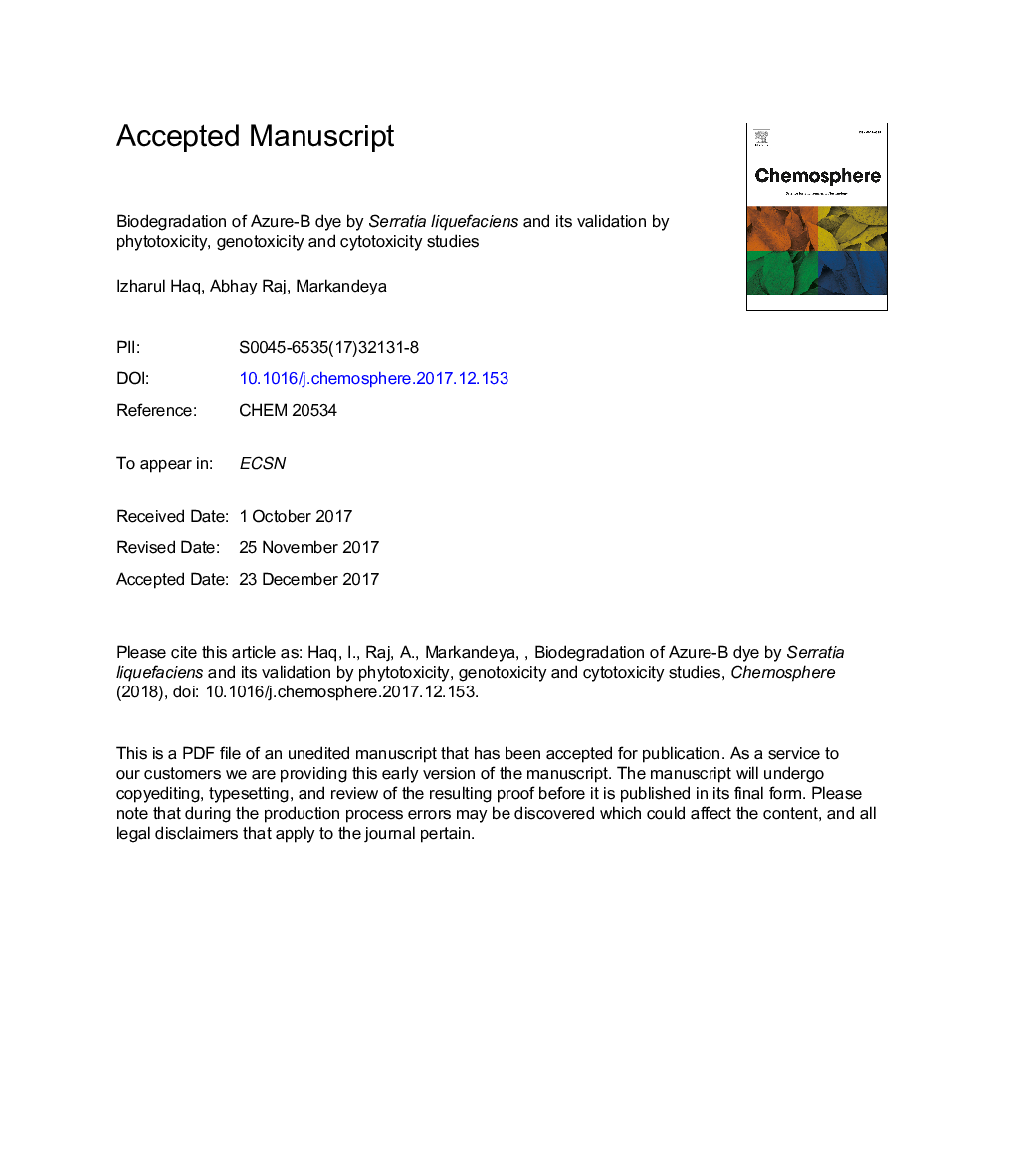| Article ID | Journal | Published Year | Pages | File Type |
|---|---|---|---|---|
| 8852139 | Chemosphere | 2018 | 43 Pages |
Abstract
The azo dyes in textile industry are a major source of environmental pollution and cause serious threat to aquatic flora and fauna. The present study aims to evaluate the potential of previously isolated lignin peroxidase (LiP) enzyme producing Serratia liquefaciens in degradation of Azure-B (AB) dye. S. liquefaciens showed rapid decolourisation of AB dye (100â¯mgâ¯Lâ1) in mineral salt medium (MSM) supplemented with 0.2% glucose and yeast extract, and more than 90% dye decolourisation was observed at 48â¯h when incubated at 30â¯Â°C. Decolourisation conditions were optimized by Response Surface Methodology (RSM) using Box-Behnken Designs (BBD). The dye degradation was further confirmed by ATR-FTIR and GC-MS analysis. Toxicological studies of untreated (UT) and bacterial treated (BT) AB dye solutions were studied by using phytotoxicity, genotoxicity and cytotoxicity endpoints. Phytotoxicity assay using Vigna radiata indicated that bacterial treatment led to detoxification of AB dye. Genotoxicity assay with Allium cepa showed that pure AB dye solutions significantly reduced mitotic index (MI) and induced various chromosomal abnormalities (CAs) like c-mitosis, stickiness, chromosome break, anaphase bridges, vagrant chromosomes and binucleated and micronucleated cell in the root tip cells, whereas, bacterial treated solutions induced relatively less genotoxicity in nature. Improved cell survivability (%) was also noted in kidney cell line (NRK-52E) after S. liquefaciens treated dye solutions than the pure dye solutions. The findings suggest that S. liquefaciens could be a potential bacterium for azo dye degradation, as it is effective in lowering of toxic effects of AB dye.
Related Topics
Life Sciences
Environmental Science
Environmental Chemistry
Authors
Izharul Haq, Abhay Raj, Markandeya Markandeya,
